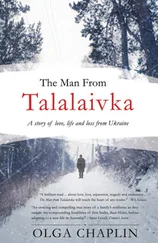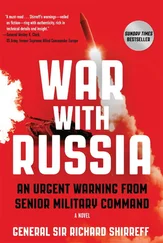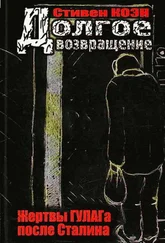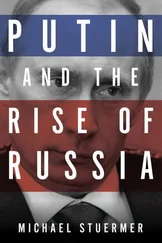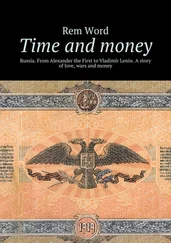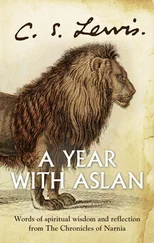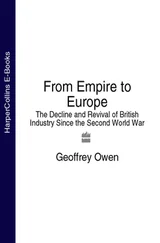Overall pre-Sochi coverage was even worse, exploiting the threat of terrorism so licentiously it seemed pornographic. The Post , long known among critical-minded Russia-watchers as Pravda on the Potomac, exemplified the media ethos. A sports columnist and an editorial page editor turned the Olympics into “a contest of wills” between the despised Putin’s “thugocracy” and terrorist “insurgents.” The “two warring parties” were so equated readers might have wondered which to cheer for. If nothing else, American journalists gave terrorists an early victory, tainting “Putin’s Games” and frightening away many foreign spectators, including some relatives of the athletes.
The Sochi Games will soon pass, triumphantly or tragically, but the potentially fateful Ukrainian crisis will not. A new Cold War divide between West and East may now be unfolding, not in distant Berlin but in the heart of Russia’s historical civilization. The result could be a permanent confrontation fraught with instability and the threat of a hot war far worse than the proxy one in Georgia in 2008. These dangers have been all but ignored in highly selective, partisan, and inflammatory US media accounts that portray the European Union’s “Partnership” proposal benignly as Ukraine’s chance for democracy, prosperity, and escape from Russia thwarted only by a “bullying” Putin and his “cronies” in Kiev.
Perhaps the largest untruth promoted by most US media is the claim that “Ukraine’s future integration into Europe” is “yearned for throughout the country.” Every informed observer knows—from Ukraine’s history, geography, languages, religions, culture, recent politics, and opinion surveys—that the country is deeply divided as to whether it should join Europe or remain close politically and economically to Russia. There is not one Ukraine or one “Ukrainian people” but at least two, generally situated in its Western and Eastern regions.
Such factual distortions point to two flagrant omissions…. The now exceedingly dangerous confrontation between the two Ukraines was not “ignited,” as the Times claims, by President Viktor Yanukovych’s duplicitous negotiating—or by Putin—but, as I pointed out, by the EU’s reckless ultimatum, in November 2013, that the democratically elected president of a profoundly divided country choose between Europe and Russia. Putin’s proposal instead for a tripartite EU-Ukraine-Russia trade arrangement, rarely if ever reported, was flatly rejected by US and EU officials.
But the most crucial media omission is Moscow’s reasonable conviction that the struggle for Ukraine is yet another chapter in the West’s ongoing, US-led march toward post-Soviet Russia, which began in the late 1990s with NATO’s eastward expansion and continued with US-funded NGO political activities inside Russia, a US-NATO military outpost in Georgia, and missile-defense installations near Russia. Whether this longstanding Washington-Brussels policy is wise or reckless, it—not Putin’s December 2013 financial offer to save Ukraine’s collapsing economy—is deceitful. The EU’s “civilizational” proposal, for example, includes “security policy” provisions, almost never reported, that would apparently subordinate Ukraine to NATO.
Any doubts about the Obama administration’s real intentions in Ukraine should have been dispelled by the recently revealed taped conversation between a top State Department official, Victoria Nuland, and the US ambassador in Kiev. The media predictably focused on the source of the “leak” and on Nuland’s verbal “gaffe”—“Fuck the EU.” But the essential revelation was that high-level US officials were plotting to “midwife” a new, anti-Russian Ukrainian government by ousting or neutralizing Yanukovych, the democratically elected president—that is, a coup.
Americans are left with a new edition of an old question. Has Washington’s twenty-year winner-take-all approach to post-Soviet Russia shaped today’s degraded news coverage, or is official policy shaped by the coverage? Did Senator John McCain stand in Kiev alongside the well-known leader of an extreme nationalist party because he was ill-informed by the media, or have the media deleted this part of the story because of McCain’s folly? Whatever the explanation, as Russian intellectuals say when faced with two bad alternatives, “Both are worst.”
April 2, 2014
THE EAST-WEST CONFRONTATION OVER UKRAINE, WHICH led to Moscow’s annexation of Crimea but long predated it, is potentially the worst international crisis in more than fifty years—and the most fateful. A negotiated resolution is possible, but time is running out.
A new Cold War divide is already descending in Europe—not in Berlin but on Russia’s borders. Worse may follow. If NATO forces move toward Poland’s border with Ukraine, as is being called for in Washington and Europe, Moscow may send its forces into eastern Ukraine. The result would be a danger of war comparable to the Cuban Missile Crisis of 1962.
Even if the outcome is a non-military “isolation of Russia,” today’s Western mantra, the consequences will be dire. Moscow will not bow but will turn, politically and economically, to the East, as it has done before, above all to fuller alliance with China. The United States will risk losing an essential partner in vital areas of its own national security, from Iran, Syria, and Afghanistan to threats of a new arms race, nuclear proliferation, and more terrorism. And—no small matter—prospects for a resumption of Russia’s democratization will be greatly diminished for at least a generation.
Why did this happen, nearly twenty-three years after the end of Soviet Communism, when both Washington and Moscow proclaimed a new era of “friendship and strategic partnership”? The answer given by the Obama administration, and overwhelmingly by the US political-media establishment, is that Russian President Putin is solely to blame. According to this assertion, his “autocratic” rule at home and “neo-Soviet imperialist” policies abroad eviscerated the partnership established in the 1990s by Presidents Bill Clinton and Boris Yeltsin. This fundamental premise underpins the American mainstream narrative of two decades of US-Russian relations, and now the Ukrainian crisis.
But there is an alternative explanation, one more in accord with the facts. Beginning with the Clinton administration, and supported by every subsequent Republican and Democratic president and Congress, the US-led West has unrelentingly moved its military, political, and economic power ever closer to post-Soviet Russia. Spearheaded by NATO’s eastward expansion, already encamped in the former Soviet Baltic republics on Russia’s border—now augmented by missile defense installations in neighboring states—this bipartisan, winner-take-all approach has come in various forms.
They include US-funded “democracy promotion” NGOs more deeply involved in Russia’s internal politics than foreign ones are permitted to be in our country; the 1999 bombing of Moscow’s Slav ally Serbia, forcibly detaching its historic province of Kosovo; a US military outpost in former Soviet Georgia (along with Ukraine, one of Putin’s previously declared “red lines”), contributing to the brief proxy war in 2008; and, throughout, one-sided negotiations, called “selective cooperation,” which took concessions from the Kremlin without meaningful White House reciprocity, and followed by broken American promises.
All of this has unfolded, sincerely for some proponents, in the name of “democracy” and “sovereign choice” for the many countries involved, but the underlying geopolitical agenda has been clear. During the first East-West conflict over Ukraine, occasioned by its 2004 “Orange Revolution,” an influential GOP columnist, Charles Krauthammer, acknowledged, “This is about Russia first, democracy only second…. The West wants to finish the job begun with the fall of the Berlin Wall and continue Europe’s march to the east…. The great prize is Ukraine.” The late Richard Holbrooke, an aspiring Democratic secretary of state, concurred, hoping even then for Ukraine’s “final break with Moscow” and to “accelerate” Kiev’s membership in NATO.
Читать дальше

